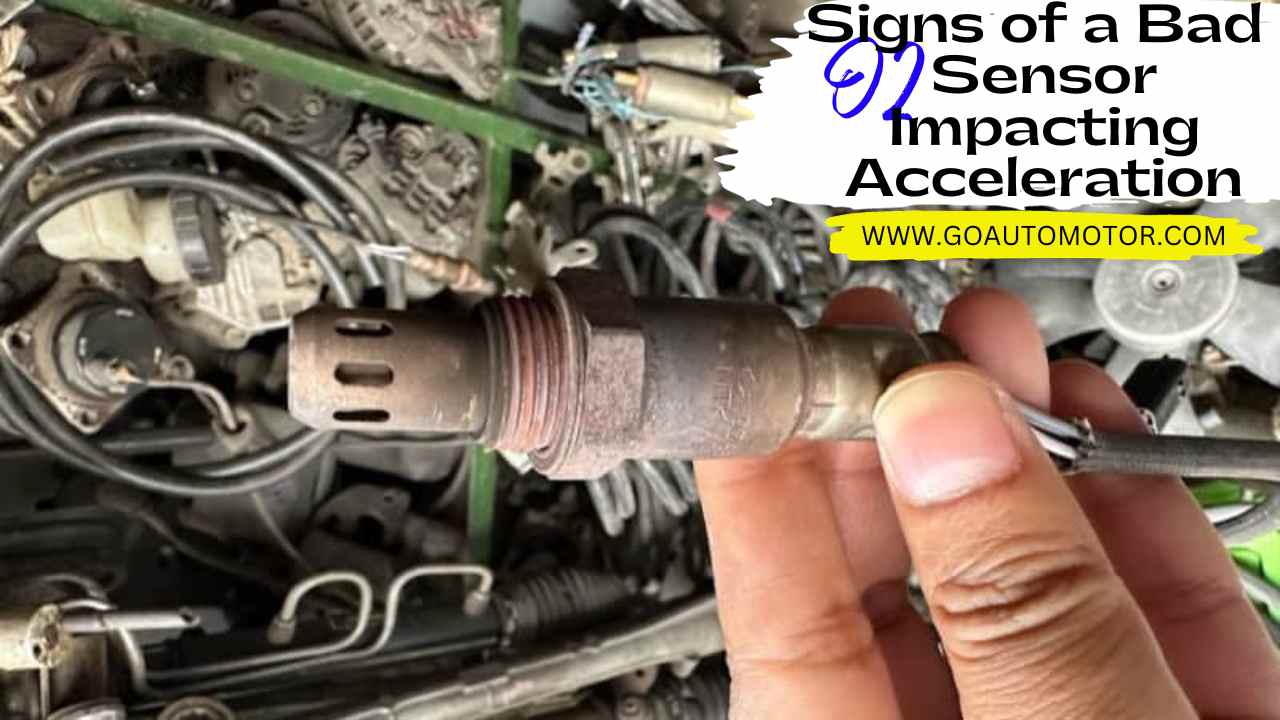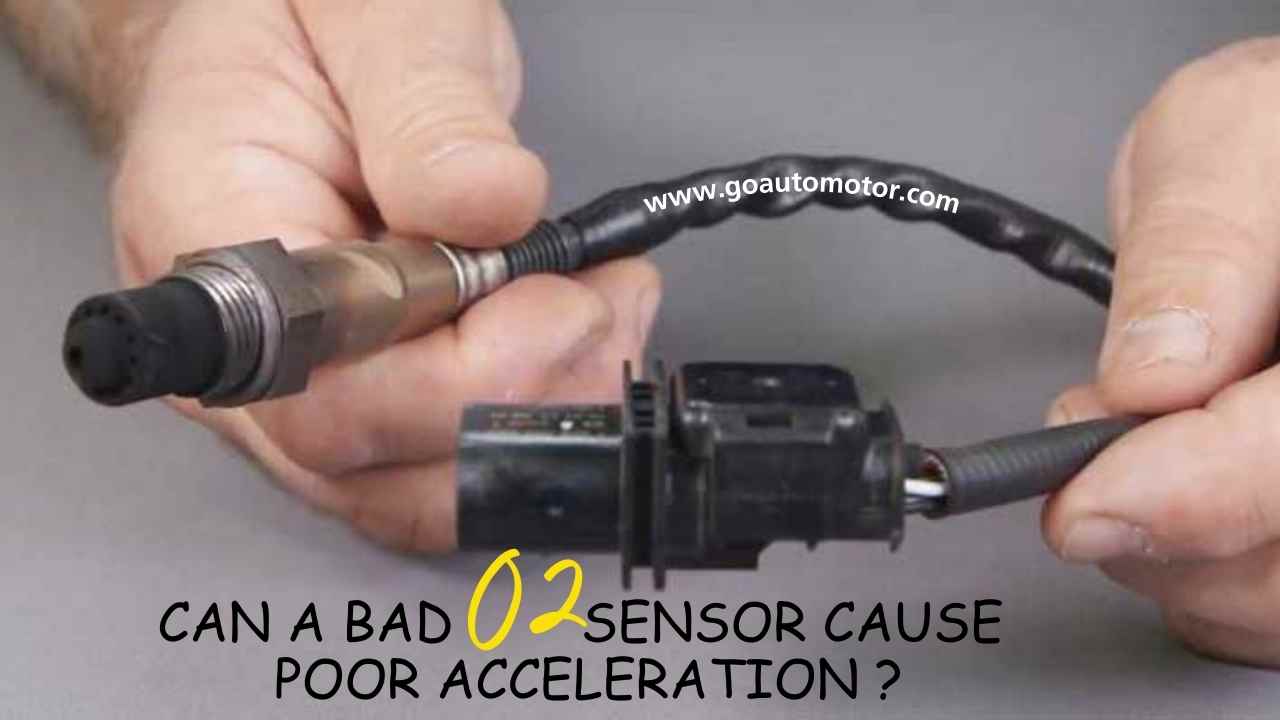Yes, a bad oxygen sensor can significantly impact your car’s acceleration performance. Oxygen sensors, also known as O2 sensors, are integral components in your vehicle’s engine management system. They play a crucial role in ensuring that the air-fuel mixture is perfectly balanced for efficient combustion. When an O2 sensor goes bad, it can disrupt this delicate balance, leading to a cascade of issues, including poor acceleration.
Understanding the Role of O2 Sensors

Before delving into how a malfunctioning O2 sensor can affect acceleration, let’s grasp their primary function. O2 sensors monitor the oxygen levels in the exhaust gases, providing real-time feedback to your car’s engine control module (ECM) or engine control unit (ECU). This data allows the ECM to make on-the-fly adjustments to the air-fuel mixture to ensure optimal combustion and performance.
Read Also Can Water Damage O2 Sensors?
The Impact on Acceleration
Here’s how a bad O2 sensor can negatively affect your car’s acceleration:
- Incorrect Air-Fuel Mixture: When an O2 sensor fails, it can send inaccurate data to the ECM, leading to incorrect adjustments of the air-fuel mixture. This can result in two detrimental scenarios:
- Rich Mixture: A faulty O2 sensor might inaccurately indicate a lean condition, causing the ECM to compensate by adding more fuel. This leads to an overly rich mixture, where there’s an excess of fuel compared to available air. An overly rich mixture can result in incomplete combustion and poor acceleration.
- Lean Mixture: Conversely, if the O2 sensor misreads the situation as rich, the ECM might reduce the fuel supply. This results in a lean mixture, characterized by too little fuel for optimal combustion, which can hinder acceleration.
- Timing and Spark Control: In addition to fuel adjustments, the ECM also relies on O2 sensor data for timing and spark control. Incorrect information from a bad sensor can disrupt ignition timing and spark advance, further compromising acceleration.
Signs of a Bad O2 Sensor Impacting Acceleration

A faulty oxygen sensor, those unassuming sentinels monitoring your car’s exhaust, can subtly yet significantly impact your driving experience, particularly in the form of sluggish acceleration. Let’s delve into the telltale signs that your O2 sensor might be playing the villain in your acceleration woes:
- Sluggish Takeoff and Hesitation: When you press the gas pedal, do you feel your car lacks its usual pep? A malfunctioning O2 sensor can disrupt the air-fuel mixture sent to the engine, leading to an imbalance. This results in incomplete combustion, translating to lower power output and frustrating sluggishness, especially during takeoff or when attempting quick maneuvers.
- Uneven Acceleration and Jerking: Do you notice your car shuddering or jerking as you try to accelerate smoothly? This could be another symptom of a bad O2 sensor. The inaccurate readings sent to the engine computer can cause fluctuations in the fuel mixture, resulting in inconsistent power delivery and unwelcome jerks.
- Reduced Top Speed and Upheaval on Hills: Does your car seem to struggle to reach its usual peak speed, especially on uphill climbs? A faulty O2 sensor can limit the engine’s ability to generate optimal power, making it feel sluggish and strained as it attempts to maintain speed or conquer inclines.
- Increased Fuel Consumption: Ironically, poor acceleration often goes hand-in-hand with an increase in fuel consumption. As the engine struggles to achieve the desired power output due to an incorrect air-fuel mixture, it might compensate by pumping in more fuel, leading to a drop in your fuel economy.
- Check Engine Light Illumination: The Check Engine Light, your car’s internal diagnostic system, often throws up this warning in case of an O2 sensor malfunction. While other issues can also trigger the light, it’s always recommended to get the system scanned by a mechanic to identify the underlying issue and potentially pinpoint a faulty O2 sensor.
- Beyond Acceleration: It’s worth noting that a bad O2 sensor can go beyond impacting your acceleration. Other potential symptoms include rough idling, engine misfires, and even increased emissions.
- The Take Away: Pay heed if you’re experiencing sluggish acceleration, especially in conjunction with any of the mentioned symptoms, as a bad O2 sensor might be the culprit. Prompt diagnosis and repair can restore your car’s lost power, improve fuel efficiency, and ensure smoother, more enjoyable driving. Remember, ignoring the signs can lead to further engine problems and potentially higher repair costs down the road.
Diagnosing and Addressing O2 Sensor Issues

If you suspect that a bad O2 sensor is responsible for poor acceleration, take the following steps:
Diagnosis: Unmasking the Villain:
Don’t jump to conclusions. These steps can help pinpoint the problem:
- Visual Inspection: Check the sensor for visible damage, corrosion, or loose connections.
- Diagnostic Scan: A mechanic can connect a scanner to your car’s computer to retrieve error codes, potentially pointing towards a specific O2 sensor fault.
- Voltage Reading: Using a multimeter, a mechanic can test the sensor’s voltage output to gauge its functionality.
Treatment: Restoring Harmony:
Once the diagnosis is confirmed, it’s time for action:
- Sensor Replacement: This is often the recommended solution. Replacing the faulty sensor with a new one ensures accurate readings and restores engine performance.
- Sensor Cleaning: In some cases, if the issue is minor (e.g., mild debris build-up), cleaning the sensor might be a temporary fix. However, complete replacement is still advisable for long-term reliability.
Prevention: Keeping the Guardians Healthy:
Proactive measures can keep your O2 sensors happy:
- Regular Maintenance: Follow your car’s service schedule and ensure proper engine maintenance to minimize sensor wear and tear.
- Quality Fuel: Using clean, high-quality fuel helps prevent contaminants from clogging the sensors.
- Avoid Driving Through Water: Deep puddles or flooded roads can expose sensors to water, potentially causing damage.
Remember: Ignoring O2 sensor issues can lead to further engine problems and potentially higher repair costs. By understanding the symptoms, diagnosing the problem accurately, and addressing it promptly, you can ensure your car runs smoothly, efficiently, and keeps the emissions in check. So, listen to your car, treat those O2 sensors right, and enjoy the thrill of a healthy, responsive drive!
You may also like Parking Brake Light Comes On While Braking
Preventing O2 Sensor Issues and Poor Acceleration
While addressing a bad O2 sensor is essential, prevention is always better than cure. Here’s how you can help prevent O2 sensor issues and the resulting poor acceleration:
- Routine Maintenance: Follow your car manufacturer’s recommended maintenance schedule, which includes periodic O2 sensor inspections and replacements.
- Quality Fuel: Use high-quality gasoline to reduce the chances of fuel system contamination.
- Mind the Elements: Avoid driving through deep water or puddles, as excessive moisture can harm O2 sensors and other vital components.
- Regular Inspections: Have your O2 sensors inspected regularly by a qualified mechanic, especially if you live in an area prone to heavy rain or snow.
By following these tips, you can help maintain your O2 sensors in optimal condition and prevent the inconvenience of poor acceleration. Remember, timely diagnosis and corrective action are crucial in ensuring your vehicle runs smoothly and efficiently, delivering the performance you expect.
Conclusion: Can a Bad O2 Sensor Cause Poor Acceleration
A malfunctioning O2 sensor can indeed cause poor acceleration in your vehicle. These sensors play a pivotal role in ensuring that the air-fuel mixture is finely tuned for efficient combustion. When they go bad, they can disrupt this balance, resulting in issues such as sluggish acceleration, reduced power, diminished fuel efficiency, and more.
If you encounter poor acceleration and suspect your O2 sensor is the culprit, it’s essential to take prompt action. Begin by scanning for error codes and inspecting the sensor and its wiring. If necessary, consult with a qualified mechanic to replace the faulty sensor and reset error codes.
To prevent O2 sensor issues and maintain optimal acceleration, adhere to your car’s maintenance schedule, use high-quality fuel, avoid driving through deep water or puddles, and schedule regular sensor inspections. By doing so, you can help ensure your vehicle operates smoothly and efficiently, delivering the acceleration performance you desire.

